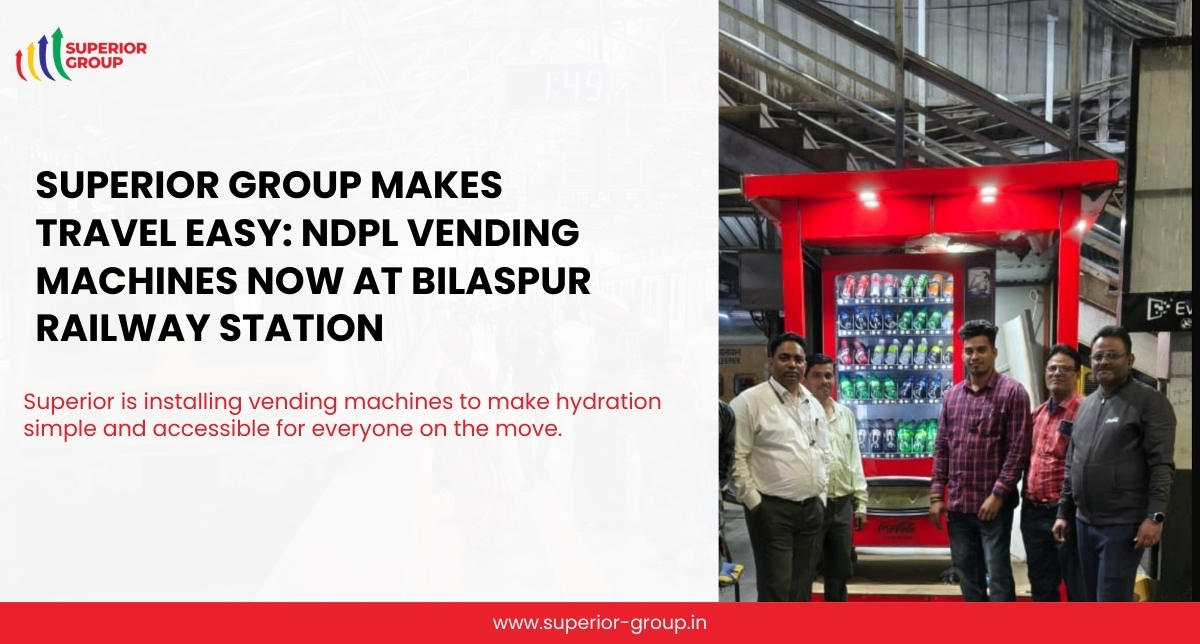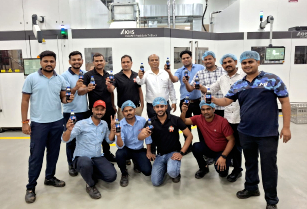The carbon footprint represents the total greenhouse gas emissions from human activities, especially in the production and consumption of goods.
In manufacturing, this includes emissions from energy use, raw materials, production, transportation, and waste. Reducing carbon footprints is crucial in combating climate change, with strategies like adopting energy-efficient technologies, using renewable energy, optimizing processes, and enhancing waste management. SGI’s commitment to net-zero emissions highlights the importance of sustainable practices. By adopting these strategies, the manufacturing sector can significantly reduce its environmental impact and support global climate goals.
At SGI, we are driven by more than just the pursuit of industrial success. Our vision extends beyond financial growth, aiming to intertwine our corporate objectives with a strong commitment to environmental sustainability. We strive to redefine industry standards by integrating environmental responsibility into the fabric of our business, demonstrating that economic growth and ecological stewardship can go hand in hand.
Our journey toward a more sustainable future is characterized by intentional, measurable steps to reduce our carbon footprint—a journey that permeates every facet of our operations. We are part of the global movement for a greener future, firm in our belief that consistent, deliberate actions can reshape the industrial landscape. Through this transformation, we seek to prove that businesses can grow without compromising the health of our planet.
At the heart of this transformation is the concept of the carbon footprint—an essential metric that measures the impact of our activities on the environment.
What is a Carbon Footprint?
A carbon footprint represents the total amount of greenhouse gases (GHGs) emitted into the atmosphere due to human activities. This includes carbon dioxide (CO₂) and other gases that contribute to global warming. These emissions result from various sources—everything from the energy we use in manufacturing to the transportation of goods and the waste produced in our operations. By quantifying this impact, we gain valuable insight into the environmental costs associated with our business practices.
Why Is Understanding the Carbon Footprint Important to SGI?
Understanding the carbon footprint of our operations is crucial to reducing our environmental impact. Every decision, from production processes to employee commuting, contributes to this footprint, and we aim to manage it with a sense of responsibility and purpose. Reducing our carbon emissions is not just an ethical responsibility—it’s a key performance metric that drives our ongoing commitment to sustainability. By actively reducing our carbon footprint, we demonstrate that growth and sustainability can coexist, setting a precedent for businesses worldwide.
For SGI, this understanding is not simply about calculating emissions—it’s about turning that data into actionable strategies that reduce our impact, from operational efficiencies to sustainable product innovation.
Can Zero Emission Growth Be Achieved in Today’s Industrial Landscape?
At SGI, we believe zero-emission growth is not only possible—it is a goal we are actively working towards. In 2023, we achieved a significant milestone by increasing our business volume by 19%, while maintaining our greenhouse gas emissions at the same level as the previous year. This achievement proves that it is entirely possible to expand economically while remaining environmentally responsible.
A shining example of this commitment is our Aranya factory in Karnataka, India, which recently earned the prestigious “Commitment to Carbon Neutrality” certification from DNV. This certification, awarded based on the international PAS 2060 standard, affirms that our factory’s operations are fully carbon neutral. Achieving this status involved a series of strategic initiatives: from the adoption of renewable energy sources like solar power and biomass boilers, to improved energy efficiency and the use of electric vehicles for transportation.
The successful certification of the Aranya factory highlights our belief that industries can be part of the solution to climate change—taking deliberate steps toward carbon neutrality and playing a vital role in building a more resilient, sustainable future.
SGI’s Blueprint for Achieving Net Zero Emissions
Our commitment to decarbonization is anchored in a clear and strategic blueprint. We have set a bold target of reducing our greenhouse gas emissions by 25% by 2030, using 2015 levels as the benchmark. Our ultimate goal is to reach net-zero emissions by 2050. To achieve this, we are focusing on several key strategies:
Increased Reliance on Renewable Energy: We are transitioning to renewable energy sources such as solar, wind, and hydropower.
Enhancing Operational Efficiency: By improving energy usage and streamlining processes, we aim to reduce our overall consumption.
Sustainable Behaviours and Innovation: Encouraging sustainable practices throughout our workforce and driving innovation to create more sustainable products.
Each of these initiatives is a crucial part of our ongoing efforts to reduce our carbon footprint, helping us to contribute to a greener, more sustainable future.
How Can We Reduce Our Carbon Footprint?
Reducing the carbon footprint of our operations involves a series of strategic steps designed to lower emissions, enhance energy efficiency, and promote sustainable practices. Here are some of the key measures we are adopting:
Streamlining Manufacturing Processes: By implementing lean production techniques, we reduce waste and enhance operational efficiency, which helps to lower our energy usage and emissions.
Shifting to Renewable Energy: Transitioning from fossil fuels to renewable energy sources—such as solar, wind, and hydropower—helps cut our carbon emissions significantly.
Using Energy-Efficient Equipment: Adopting the latest energy-efficient machinery reduces both energy consumption and emissions.
Establishing Energy Management Systems: Systems like ISO 50001 help monitor and optimize energy use, leading to both cost savings and reduced emissions.
Enhancing Resource Efficiency: We prioritize resource conservation through recycling, waste minimization, and the use of recycled materials in production.
Fleet Electrification: By switching to electric or hybrid vehicles, we reduce emissions from transportation while also lowering fuel costs.
Sustainable Product Design: We innovate to create products that require fewer resources to produce, last longer, and are more energy-efficient, significantly reducing their environmental impact.
Investing in Carbon Offset Initiatives: We invest in projects like reforestation or renewable energy, which help offset any unavoidable emissions.
Regular Monitoring and Reporting: We track and report our emissions regularly, ensuring transparency and continual improvement in our sustainability practices.
By implementing these strategies, we are not only reducing our environmental impact but also enhancing operational efficiency, saving costs, and building a more sustainable future for all.
How Do We Calculate Our Carbon Footprint?
To understand the full extent of our environmental impact, we calculate our carbon footprint by measuring the greenhouse gas emissions from both direct and indirect sources. This is done through a framework known as the three scopes:
Scope 1 Emissions: These are direct emissions from company-controlled sources, such as manufacturing facilities and fleet vehicles.
Scope 2 Emissions: These are indirect emissions from the consumption of purchased electricity, steam, heating, or cooling.
Scope 3 Emissions: These emissions occur across the value chain, including transportation, employee travel, and the production of purchased goods and services.
By collecting data on energy consumption, transportation, waste generation, and other relevant activities, we calculate the total emissions, usually expressed as CO₂ equivalents. This enables us to identify the main contributors to our carbon footprint and target them for reduction.
For smaller businesses, online carbon calculators may be used to get an estimate of emissions, while larger companies typically rely on specialized software or consultants to perform a detailed analysis.
Conclusion: A Path Toward a Greener Future
At SGI, our journey toward sustainability is not just a response to global challenges—it is an opportunity to lead by example and demonstrate that economic growth and environmental responsibility can coexist. We are committed to turning our vision of a greener, more sustainable future into reality, with measurable goals, innovative solutions, and a steadfast dedication to reducing our carbon footprint.
By working together, we can make a meaningful difference and ensure a healthier planet for future generations. Let’s take bold action now to create a sustainable future, where business success and environmental stewardship go hand in hand.








